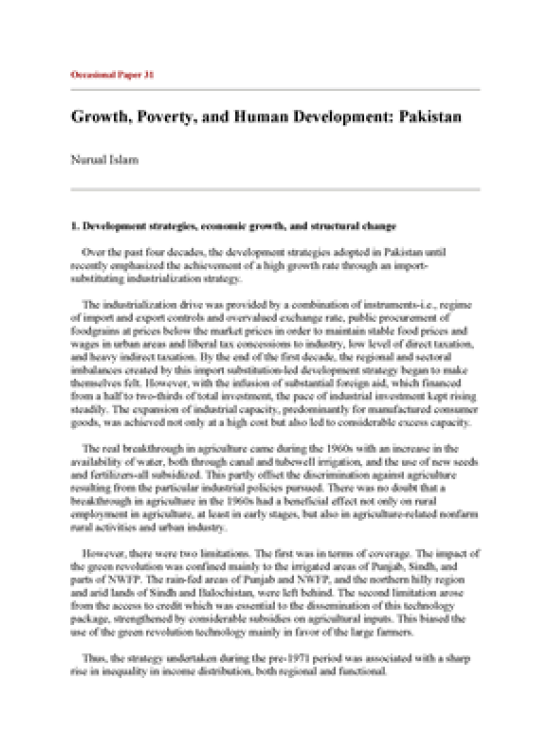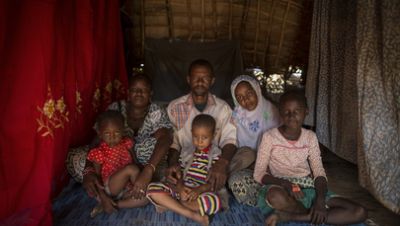Growth, Poverty and Human Development: Pakistan

Download Report by Language
Document
nurualislam.pdf
(82.21 KB)
Citation
Islam, Nurual. 1996. Growth, Poverty and Human Development: Pakistan. New York.
Growth, Poverty and Human Development: Pakistan
Posted on: January 01, 1996
Over the past four decades, the development strategies adopted in Pakistan until recently emphasized the achievement of a high growth rate through an import substituting industrialization strategy. The industrialization drive was provided by a combination of instruments-i.e., regime of import and export controls and overvalued exchange rate, public procurement of foodgrains at prices below the market prices in order to maintain stable food prices and wages in urban areas and liberal tax concessions to industry, low level of direct taxation, and heavy indirect taxation. By the end of the first decade, the regional and sectoral imbalances created by this import substitution-led development strategy began to make themselves felt. However, with the infusion of substantial foreign aid, which financed from a half to two-thirds of total investment, the pace of industrial investment kept rising steadily. The expansion of industrial capacity, predominantly for manufactured consumer goods, was achieved not only at a high cost but also led to considerable excess capacity.

